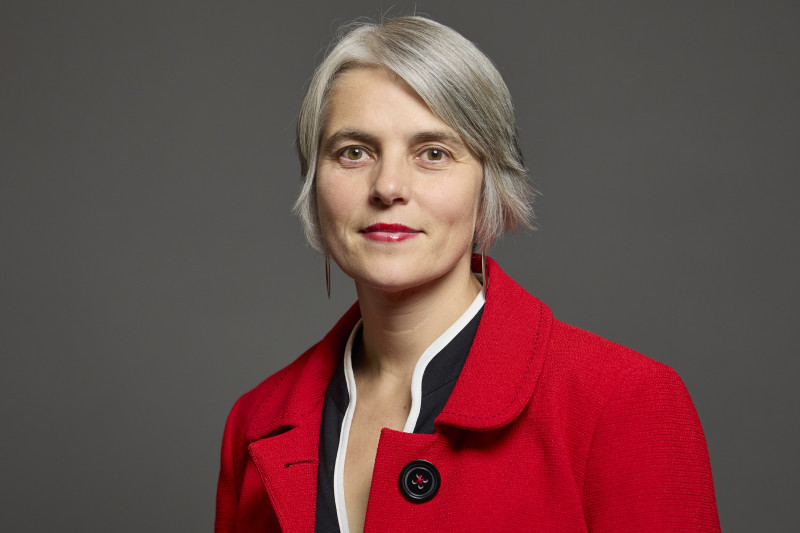Dixon begins by reflecting on a career consistently focused on improving health and care. From her time at the World Health Organization and The King’s Fund, to senior roles in government as Director of Strategy and Chief Analyst at the Department of Health, and later as Chief Executive of the Centre for Ageing Better, her professional life has been bound up with tackling inequality.
Standing for Parliament in 2024, she says, was both “a homecoming” to the constituency she grew up in and a conscious decision to change strategy: “After years trying to change policy from the outside, [I felt] it was time to make a difference from the inside”.
Her first priority on arrival in Westminster was clear: unpaid carers. She describes them as the invisible backbone of the system, “filling the gaps” left by formal care, often at significant personal cost. “It’s happening behind closed doors”, she says. “It isn’t seen, and it isn’t valued”. Too often, that invisibility distorts political debate and leads to timid policymaking.
Her route to the All-Party Parliamentary Group (APPG) on Carers came via the Archbishops’ Commission on Reimagining Care, which she chaired before entering Parliament. “We need a shift in attitudes”, she argues. “That’s why it’s so important to bring the public with us, to change the culture, before we start asking people to support bigger changes in funding and entitlements”. For this reason, she welcomes the Casey Commission, launched by the Labour Government, which has built a “national conversation” into the first stage of its work.
Sequencing reform
When asked about the Carers Leave Act, which came into effect in 2024, Dixon recognises its importance but also its limitations. “It’s a really fantastic step forward”, she says, “but for many carers, unless they do get paid, [taking time off] is unaffordable”. The task now, in her view, is to shift from unpaid to paid leave, ideally on a statutory basis once the economic case is made.
She points to employers who already provide paid carers’ leave and who report improvements in retention and reduced absenteeism. “People don’t abuse it. Often, they don’t even take the full entitlement. It’s obviously a win-win from the employer’s point of view”.
The discussion turns to the NHS, and here Dixon is blunt: underinvestment in care harms patients and wastes money. People remain in hospital beds longer than necessary and discharges become more difficult. Better join-up between health and care is vital, she insists, but she is also wary of seeing care only through the lens of the NHS. “Many disabled people who need support aren’t NHS patients”, she says. “Care is about enabling people to live well, to work, to train, to participate. It’s not just about hospital discharges. It’s about life”.
On funding, Dixon highlights several immediate priorities for government. The earnings limit for Carer’s Allowance must be raised, and the punitive “cliff-edge” overpayments system replaced with a taper. Local government settlements, now moving to a three-year cycle, should be used to drive better commissioning, including through fair pay agreements that set expectations on providers. “A lot can be achieved by doing a better job of commissioning from providers as well as spending more”, she argues, noting that waste and poor incentives are as damaging as underfunding itself.
Asked whether funding should be centralised, she takes a nuanced line. In the short term, she sees progress coming from existing structures: local authorities with more resources, and stronger expectations from central government. In the longer term, however, she is open to bolder reform.
For many carers, unless they do get paid, [taking time off] is unaffordable
“It may be that we raise a greater share nationally through taxation and distribute to councils via formula”, she says, “or that we move towards individual entitlements with budgets, closer to the Australian model”. What matters most, she stresses, is sequencing. The Casey Commission is structured deliberately with its first phase due to be complete in 2026 for practical steps that government can take, and phase two in 2028 for the deeper reforms that could create a “new pillar of the welfare state”.
That, she says, must rest on cross-party agreement and public backing: “We want create something [to last] 70 or 80 years as with the National Health Service and therefore I think it’s right that these proposals get widespread support”.
Building for the long term
Technology also features in her thinking, though always as a tool rather than a replacement for human care. Dixon points to her own local city of Bradford as a place that has led the way in using digital tools to keep people in touch with community teams and build confidence after leaving hospital.
“Technologies are not the only solution but they can make a real difference to people being able to go home earlier and stay well”, she says. The challenge, in her view, is not invention but scale: too many promising pilots disappear once funding runs out.
“In a National Care Service, we need to look at home these pockets of innovation can be adopted across the country ... and make sure they are sustained for the future”.
As the conversation draws to a close, Dixon’s outlook is hopeful. “I hope that all political parties going into the next election will be in a position to support a long-term view of what we need to respond to the demographic changes taking place”, she says. “Countries like Japan and Germany put their care systems onto a sustainable footing almost a decade ago ... we need to do the same”.



